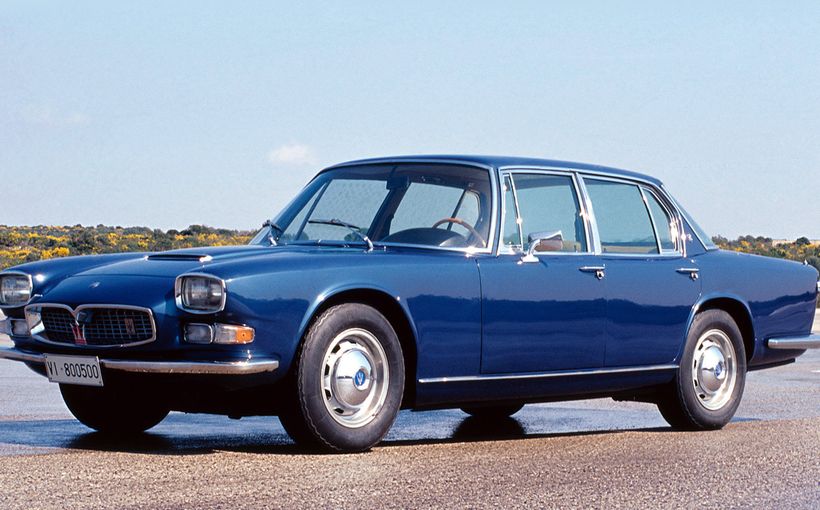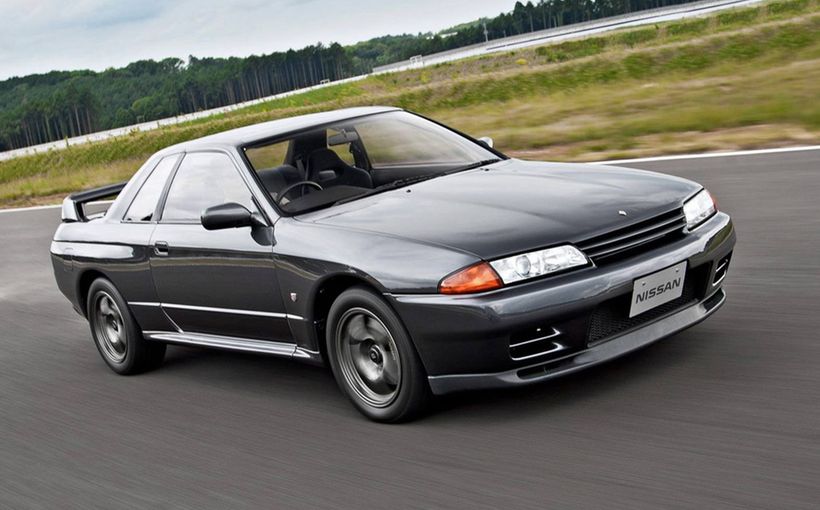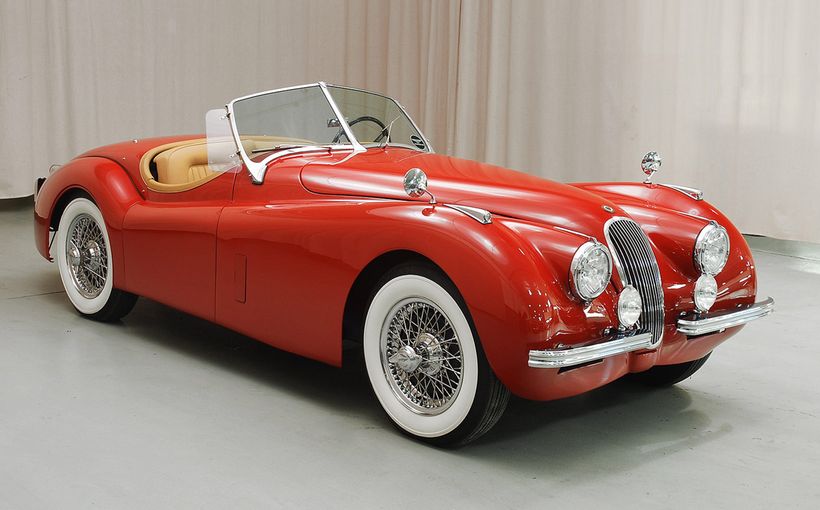Mazda R100 Coupe: Japan’s first Q-car

The Mazda R100 was another 1960s Japanese car that put the international automotive industry on notice. We had already experienced the Isuzu Bellett and Toyota Corona, which effectively redefined the compact four-cylinder sedan market. Then came the Corolla which instantly rendered all British small two-door sedans outdated. The Corolla was followed by the redoubtable BMW-inspired Datsun 1600. But none of these prepared us for the Mazda R100 with its Wankel rotary engine packaged ever so neatly into the bodywork of the neat, effective and unassuming Mazda 1200 Coupe.

The first point to make about the R100 is that there was no precedent, at least in Australia, for such a high performance small car. Ford never sold the Lotus Cortina here and neither the Cortina GT nor the Mini-Cooper 1275S were really in the same league as the R100. Despite its convincing dominance of the 1966 Bathurst 500-mile race, in road trim the Cooper S could not achieve a genuine 100 mph top speed, which was still a benchmark – as ‘the ton’ – in the mid to late swinging sixties.
Typical small cars such as the Mazda 1200 coupe with which the R100 shared its tall and narrow body took 20 seconds or more for the standing quarter-mile and topped out at 140km/h or less.
Toyo Kogyo used the name ‘Mazda’ on its cars (a name shared with a light-bulb!) and had radical plans for the 1970s. The R100 is best understood as the company’s first mass-produced essay into what it hoped would be a rotary future. It was revealed at the 1967 Tokyo Motor Show where it shared the Mazda limelight with the newly released Cosmo 110S. An official Toyo Kogyo press release puts the matter eloquently:
In 1961 Toyo Kogyo obtained from NSU/Wankel a licence on the NSU/Wankel type rotary engine and has since continued development work on this engine for automotive use. Completing all the necessary tests, including field and endurance tests, the company placed on the market in May 1967 a sports car, Mazda 110S, mounted with a rotary engine.
The Mazda 110S attracted the world’s attention as a car powered by the world’s first 2-rotor rotary engine and gave rise to an increasing demand for applications of this engine to ordinary passenger cars. In preparation for the future mass production of the rotary engine, Toyo Kogyo has been making arrangements for the installations of necessary machinery and equipment, along with carrying out research work for improving the materials and production engineering. As the production setup was completed, the rotary engine was installed on an ordinary passenger car, which was our original aim, and the car was placed on the market under the name of Mazda R100 Coupe.
Apart from the content of this extract, there is one stylistic element I can’t help but notice. In the final sentence there is a significant move from the impersonal third person (‘Toyo Kogyo has been making…’) to the proud first person (‘our original aim’). This alone suggests the enormity of this move for one of Japan’s smallest automotive manufacturers. Along with the pride, there’s humility too in that phrase ‘ordinary passenger cars’.

In the Australian context in 1969, there was nothing ‘ordinary’ about the Mazda R100 Coupe. It made its local debut at the Sydney Royal Easter Show. Indicating that he didn’t quite understand the car, at least one commentator invoked the MGB Mark II. But the R100’s real rivals included the Fiat 125, Holden Monaro GTS 186S, Chrysler Valiant Pacer and Ford Cortina GT. Later that year came the Holden Torana GTR which was indeed a match for the Mazda in many areas. Emerging from left field was the Renault 16TS, a fine car but no performance challenger for the R100.

It was a sign of those less sophisticated times that the $3000 sporting models were so different from each other, with few exceptions. Four-cylinder engine or six? Or rotary? Rear-drive or front (the Renault)? Two doors or four?
Of these aforementioned cars, the $2790 Mazda was externally the least assuming while being the quickest. Even though the Pacer and GTR could match the R100’s 17.8-second standing quarter-mile time, at 168 or so they were some seven km/h shy of its top speed. The Cortina could barely top 145 and the Fiat’s 6250rpm redline constrained it to 158.
Although the 110S ‘Cosmo’ had paved the R100 Coupe’s road, that car was essentially unknown in Australia. The gorgeous but fragile NSU RO80 had given our market its only prior experience of the Wankel rotary engine, so suspicion prevailed.

It is never, of course, a case of only what any car can do, but more importantly how it does what it does. Before the advent of the Mazda in this keenly contested market sector, the most sophisticated offering was undoubtedly the Fiat 125 with its twin overhead camshaft engine, four-wheel disc brakes and proper four-on-the-floor gearbox with power gearing (maximum speed in top gear at the redline).
Even after the introduction of the Renault 16TS, the 125 remained the choice of most purists. It was the early adopters who chose the conservative looking Japanese coupe with the out-there engine.

Elements of the upmarket 110S made their way into the cheaper coupe. The interior had much the same feel with the emphasis on black. Prominent matching speedo and tacho in the style of traditional English sports cars gave a much clearer idea of the R100’s intended role in the market than its quiet exterior styling. A centre console did not sweep back between the front seats but housed the stubby gearshift and minor gauges. And while the ‘wood’ of the GTS Monaro’s wheel was fake, the rim of the Mazda’s had once stood in some forest. There were no shortcuts in the presentation. To compare the Mazda with any of its rivals from the Australian industry was to see how the Japanese emphasis on high quality and extensive standard fittings would eventually spell the beginning of the end. But I’m getting ahead of the story.

Unexpected standard equipment included a radio with an electric aerial and an effective heater-demister with a three-speed fan. There were headrests on the front seat and high quality carpet. It was a compelling little scale model Ferrari package, with that crisp 2 + 2 coupe body and a fair dinkum timber wheel ahead of gauges designed into the car (rather than thrown on afterwards per the tachometers in the Monaro GTS and Pacer!)
The Mazda Australia public relations people though had a lot to learn. Their press release for the R100 opened thus: ‘And you thought rotary clothes lines were revolutionary!!’ In 1969 the Hills hoist was far too familiar for even a single exclamation mark! Further in came a more telling claim aimed squarely at Fishermans Bend and Broadmeadows: ‘Well there’s a little something on its way from Japan that will make your V8 seem like a horse and buggy.’

A conservative approach was taken with the redline which was painted from 6500. There was a cutout on the second barrel of the carburettor at 7000. As anyone who has ever raced a 10A Mazda (I plead guilty) can attest, very much higher numbers are readily achievable from a bog stock engine running a decent exhaust. Back in the R100 era the engineers were justifiably worried about durability, particularly of the rotor tips. (It would indeed be several years before Toyo Kogyo’s engineers were able to build serious long life into the Wankel; premature engine overhauls were expected, even though Mazda’s engines were many times superior to those built by NSU, who went bust as a consequence of the RO80’s failure.)

Some testers criticised the gap between second and third gears, exacerbated by the engine’s comparative shortfall in torque. The respective maxima were 90km/h and 140. Top gear was direct and the final drive ratio was 3.7 to one.
No question, the Japanese automotive engineers learned about performance before they got around to dynamics. The Datsun 1600 was probably the exception that proved this rule. As for the R100 Coupe, it was an ordinary handler. Even the dimensions of the body provide a clue. Just 3830mm long, the R100 was 1480mm wide and nearly as tall at 1345. Throw in the standard issue skinny 145/SR14 radials and generous 160mm ground clearance and it’s easy to see why the little Mazda looked as if it might want to topple over.

The front suspension was by MacPherson struts (as pioneered in the Japanese industry by the KE10 Corolla), while good old semi-elliptics kept the rear of the car from dragging on the bitumen. Ride was only fair, as was to be expected from a small car built on such a short wheelbase, and it bucked around over bumps unless there were a couple of adults sitting in cramped fashion in the rear compartment.
It is difficult to believe in today’s era of over-engineered cars, but the R100 tipped the scales at just 805kg. There was no need for power steering, a luxury still some years into the future for most Australian motorists. Nevertheless, the steering lacked feel and there was considerable lost motion at the straight-ahead position. At least the steering was direct with a mere 3.5 turns from lock to lock.
The most surprising thing about the car in which Toyo Kogyo offered rotary power to the masses was the contrast between the engine and practically every other aspect of its design except the interior. Just maybe this was the designers’ cunning plan. By plumbing their radical Wankel into a conventional, if slightly smart little coupe, perhaps they hoped not to create too much alarm among prospective buyers.

There may even have been a few customers who happily bought the R100 Coupe with its delightfully brisk performance and remained unaware that its engine design was shared with the ill-fated NSU. In December 1971, by which time the RX-2 had been available in both coupe and sedan form for more than a year, the R100 slipped off the new car price lists; with the RX-2 commanding a premium of about $200, the earlier model would have struggled for sales.
Exchanging an original R100 for a considerable pile of money is, however, no problem now. Paradoxically, you’ll pay a fair bit more for one of these than for an RX-8!
When it comes to summing up the Mazda R100 coupe, I can’t do better than quote the English magazine Motor. In its road test for the week ending January 17, 1970, the writer began with the conclusion:
Excellent performance, superb engine with heavy fuel consumption; handling and roadholding fair; finish and trim good.
It was, however, just a little different in Australia amid the psychedelia of 1969. The local manufacturers were coming up with bright colours and great names like GT, GTS, GTR and Pacer for their go-faster offerings. But Mazda Australia took a different approach with the understated R100Coupe, Japan’s first Q-car.










